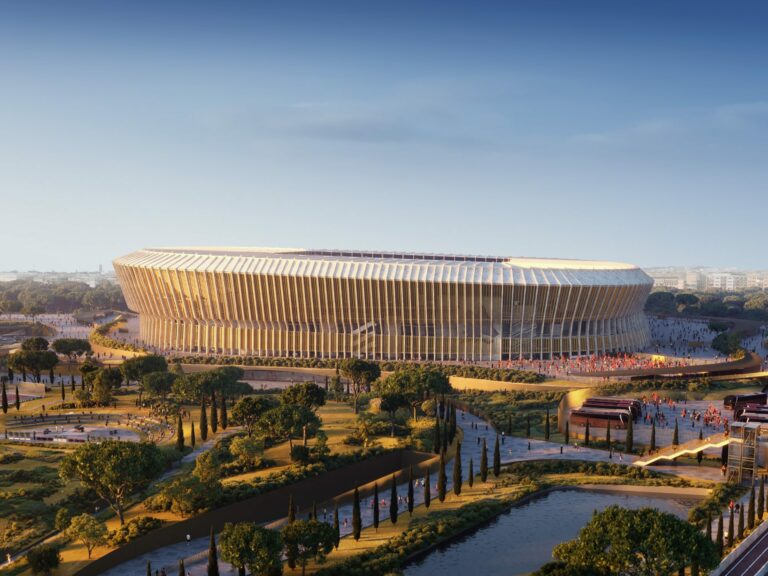AS Roma: Unveiling the Future of Soccer with Innovative Stadium Designs
In the ever-evolving world of sports and entertainment, the design and functionality of stadiums play a pivotal role in enhancing the fan experience and driving revenue for clubs. Recently, AS Roma unveiled its ambitious plans for a state-of-the-art stadium and community district, a project poised to set new standards in soccer architecture and community engagement.
The Vision Behind AS Roma’s New Stadium
The heart of AS Roma’s vision is to create a world-class sports venue that not only enhances the matchday experience but also serves as a catalyst for community interaction. With the collaboration of renowned architects at Populous, the club aims to design a stadium that is both functional and aesthetically pleasing, integrating modern technology with sustainable practices.
The new stadium will feature a seating capacity to accommodate thousands of passionate fans, while ensuring that every seat offers an unobstructed view of the action on the pitch. The layout has been meticulously planned to facilitate better crowd management, ensuring safety and comfort for all attendees.
Innovative Features of the Stadium Design
One of the key highlights in AS Roma’s stadium design is the focus on enhancing the fan experience through innovative features. Proposed amenities include:
- Flexible Seating: A variety of seating options will cater to fans of all ages. From family-friendly sections to premium hospitality areas, the design caters to diverse preferences.
- Technological Integrations: The stadium will incorporate advanced technology for a connected fan experience, including high-speed Wi-Fi, mobile app integrations for in-stadium services, and interactive displays.
- Environmental Sustainability: AS Roma is committed to reducing the ecological footprint of their operations. The new stadium will utilize renewable energy sources, rainwater harvesting systems, and efficient waste management practices.
A Community-Centric Approach
Unlike many stadium projects which focus solely on the sporting aspect, AS Roma’s initiative aims to foster a vibrant community district surrounding the stadium. This area will feature:
- Public Spaces: Designed to be accessible to all, the community district will include parks, recreational facilities, and areas for entertainment and events.
- Business Opportunities: The project is expected to stimulate local businesses by providing spaces for shops, restaurants, and services that cater to both match-day crowds and everyday visitors.
- Cultural Events: The stadium and its surroundings will host a variety of cultural, social, and entertainment events, positioning it as a year-round destination.
The Economic Impact of the Stadium
Investing in a new stadium is not just a financial endeavor but a chance to boost the local economy significantly. According to studies, new stadiums can generate considerable economic impact by creating jobs, increasing tourism, and enhancing the local infrastructure.
AS Roma’s project is expected to create thousands of jobs during and after the construction phase. Furthermore, the influx of visitors for games and events will benefit local businesses, ranging from hotels to restaurants, driving economic growth.
Conclusion: A New Era for AS Roma
AS Roma’s unveiling of the plans for their new stadium is not merely about improving the game-day experience but about creating a holistic environment where sports and community life intertwine. With a clear vision set forth by Populous, the club is taking significant strides towards redefining how a soccer stadium can serve its purpose.
This exciting development promises to enhance the city’s landscape while strengthening community ties. As the project progresses, fans and community members alike will be eagerly awaiting what the future holds for AS Roma and its new home.








